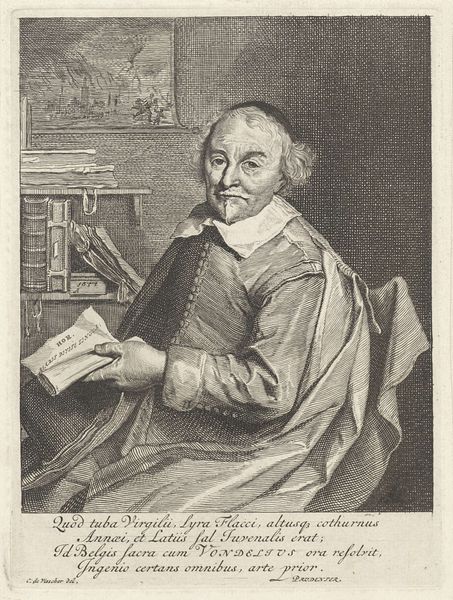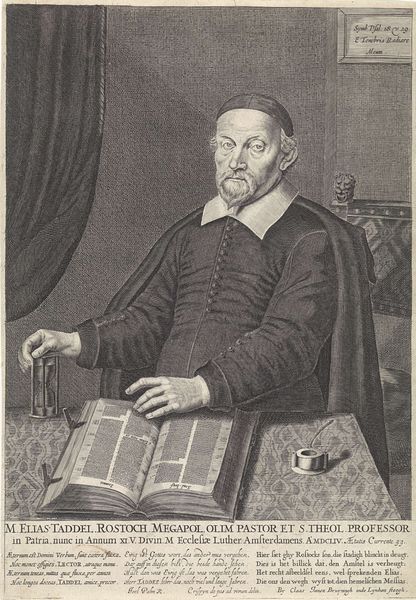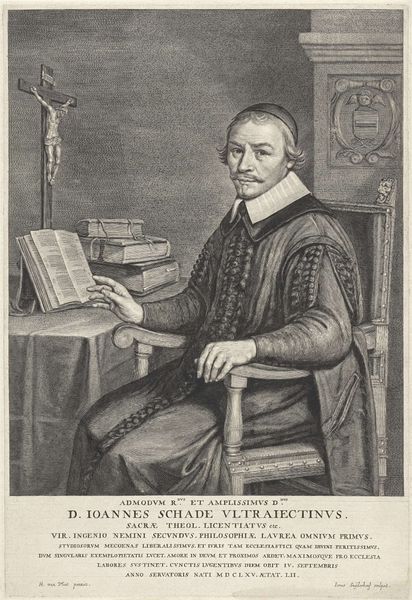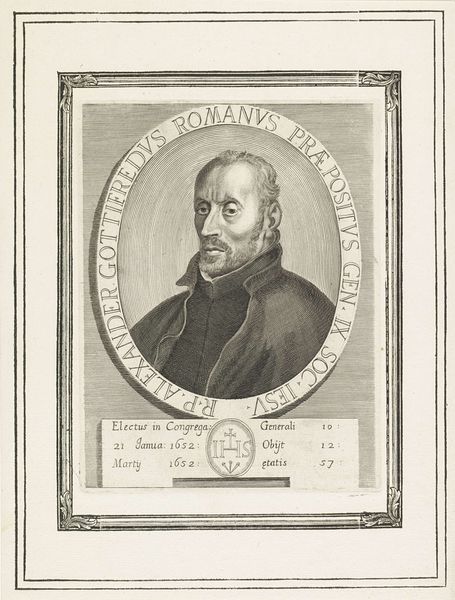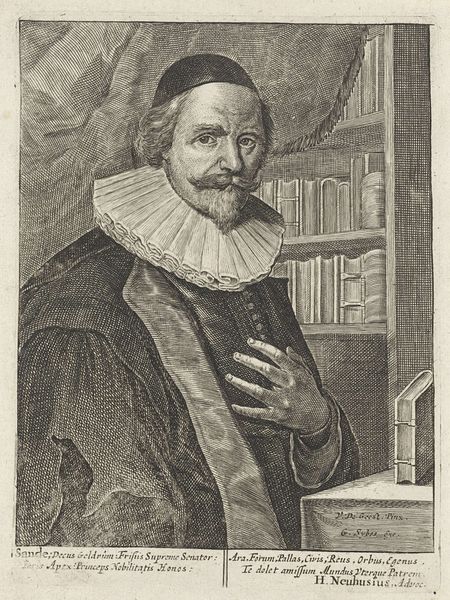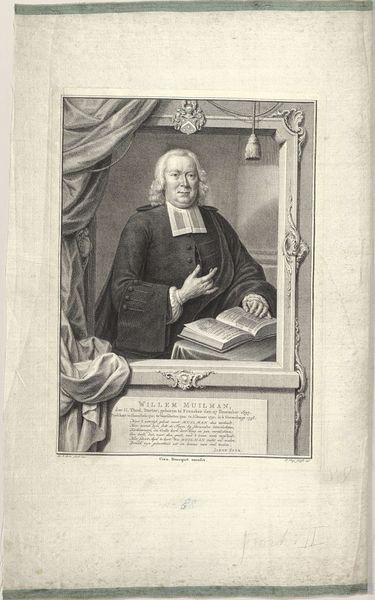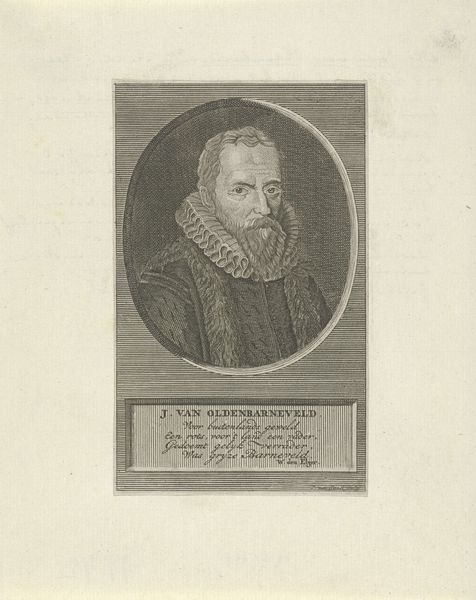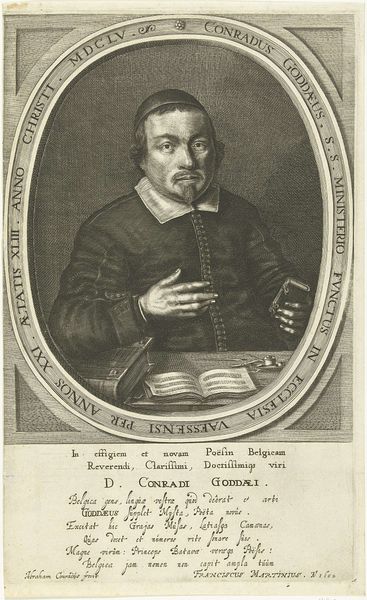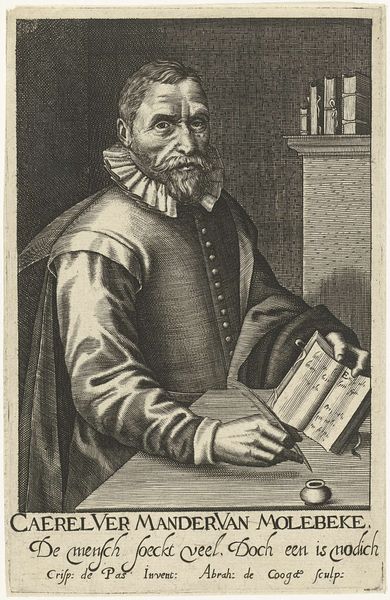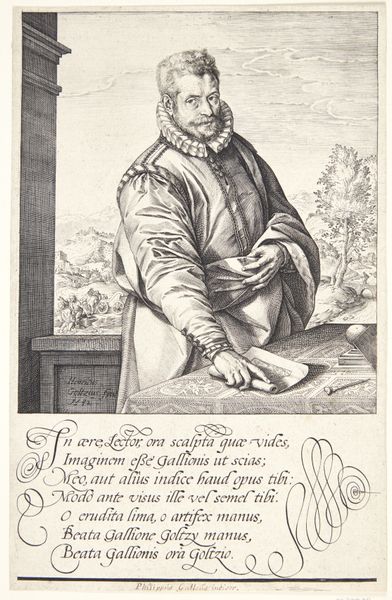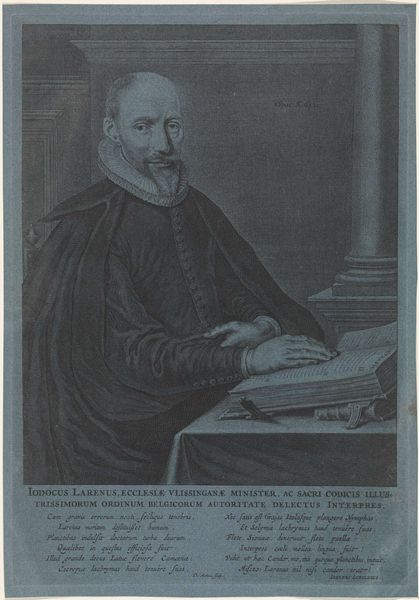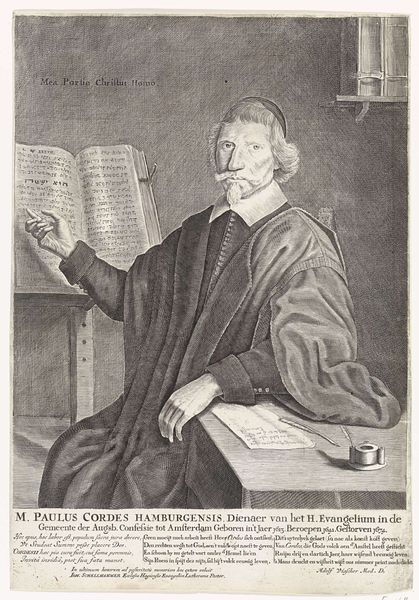
engraving
#
portrait
#
baroque
#
old engraving style
#
old-timey
#
limited contrast and shading
#
history-painting
#
engraving
Dimensions: height 306 mm, width 217 mm
Copyright: Rijks Museum: Open Domain
Curator: I find this engraving, "Portret van Cornelius Cossius," quite compelling in its stark simplicity. Executed sometime between 1661 and 1670 by Crispijn van de (II) Passe, it presents a fascinating study in texture achieved solely through line work. Editor: My immediate reaction is somber. There's a weightiness to the subject, a certain austerity. The limited shading emphasizes the sitter’s world-weariness. It really evokes the intense social and religious context of 17th-century Holland. Curator: Precisely! Van de Passe's skill with the engraving tool allows him to suggest fabric and form, light and shadow, through a series of precise cuts in the metal plate. I am particularly interested in the tools and the physical labour required for this reproduction of Cossius, which allowed him to exist far beyond his lifetime. Editor: Indeed, and let's consider Cornelius Cossius himself. He was a preacher, as the inscription below the image details, active in a period defined by theological debate and reformation. That little book he's holding – what message is it meant to communicate? How would its original audiences interpreted the implications of literacy and script? Curator: His gaze, averted, hints at an intellectual or perhaps a spiritual interiority. Notice, too, the compass and open book—suggesting his life was devoted to religious investigation. How was this devotion materially and financially supported by the Protestant community in Amsterdam, allowing for this type of creative patronage? Editor: The entire image is a product of its time and location—the flourishing Dutch Republic where religious, political, and mercantile forces intersected. This portrait acts as a type of archive, providing insight into the cultural, political, and historical contexts in which it was made. Curator: Absolutely. And by examining its production as an engraving, we can trace the labour, materials, and skill that allowed such a potent image to emerge and to speak to us across the centuries. Editor: This engraving compels me to investigate the life of a single individual but also broader patterns of identity and belief, as we work toward a better grasp on 17th-century Dutch society.
Comments
No comments
Be the first to comment and join the conversation on the ultimate creative platform.
